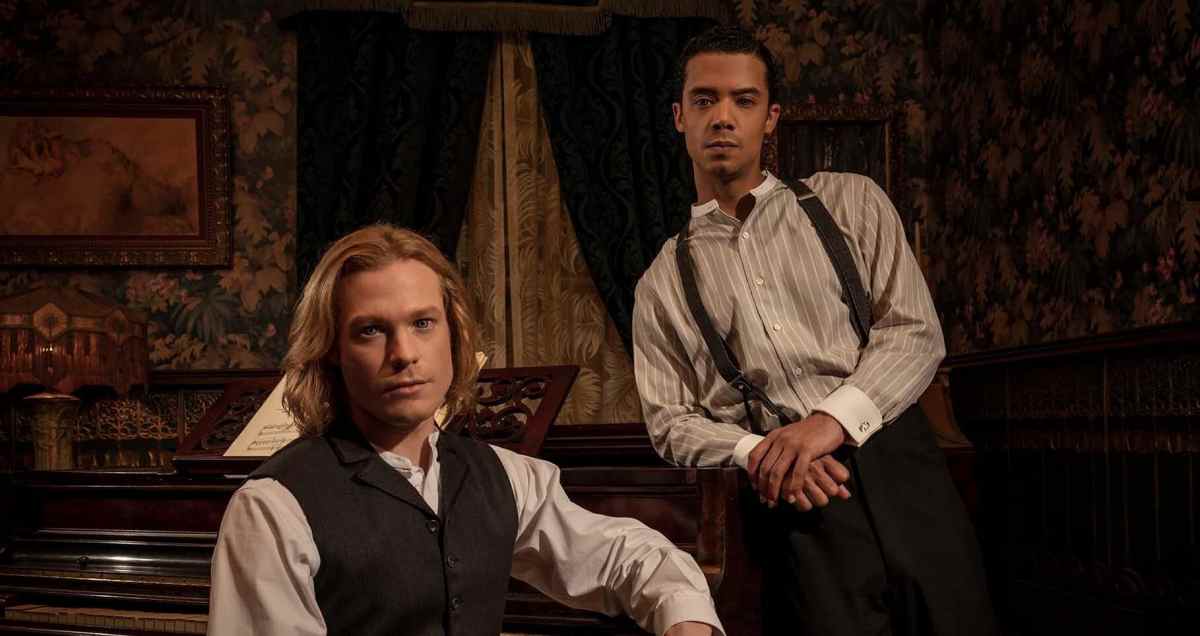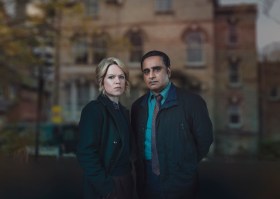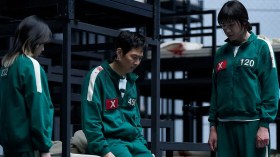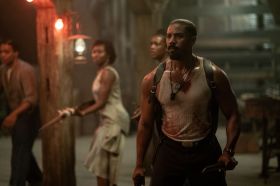Interview with the Vampire (2022) is AMC+’s binge-worthy take on the very popular Anne Rice novels The Vampire Chronicles, which were first published in the 1970s. Both the book and the series centre on a vampire by the name of Louis de Pointe du Lac, who tells his life story to a young reporter named Daniel Molloy.
The first key difference in AMC+’s adaptation is that this isn’t the first interview between Molloy and Pointe du Lac. The other difference is that any queer subtext in the original book has been fully realised now, and the show doesn’t tease at the idea of a gay vampire couple: it’s obvious by episode two that that’s what it’s all about.
We’re dropped into this alternate version of our world some 50 years after the original meeting of vampire and journalist, when Daniel Molloy (Eric Bogosian) is very much a senior in his field, suffering from Parkinson’s and on the verge of retirement, and selling masterclass courses online to pay the bills.
Is it any wonder then, that when a mysterious package full of tape recordings is delivered to his doorstep, complete with a letter of invitation to Louis de Point du Lac’s (Jacob Anderson) house in Dubai, that he drops everything else to chase the story? And not just any story – the scoop of a lifetime; a second chance at a botched exclusive with a vampire?
Read: Dangerous Liaisons on Stan review: it’s either love or war
Objectively supernatural
But why the redo, and why now? What has changed in Louis’ mind, and why does he feel the need to set the record straight? What, if anything, was true about the original story?
When Molloy arrives in Dubai and sits down with laptop and microphone in Louis de Pointe du Lac’s luxurious penthouse, the latter makes it clear this story will not be unbiased. ‘Let the tale seduce you, just as I was seduced,’ he says. It’s as much a flirtation as it is a warning that not everything is as it seems.
Thus the issue of objectivity and journalistic integrity frames this wonderful series, keeping the viewer hooked with mystery after mystery.
Read: Morbius review: going for bust with blood lust
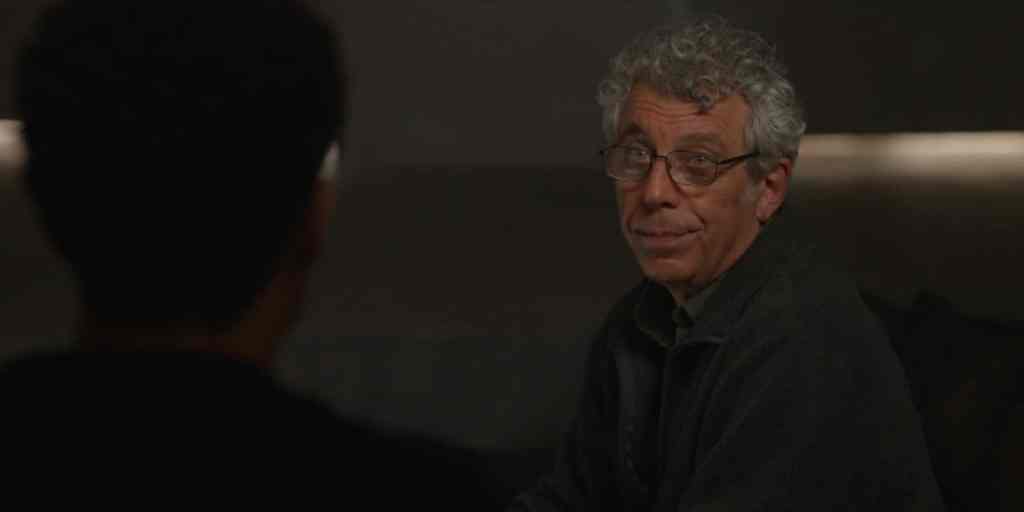
Master and fledgling
So, Louis is a vampire – this much is true. We start the narrative from his perspective, told in a well-rehearsed monologue that is only occasionally interrupted by Molloy’s questions, like ‘Did you eat the baby?!‘ Well, a vampire’s gotta drink blood, and if a baby’s the only human available, it’s a fair question!
We learn all about Louis’ past as an African-American pimp in Storyville, New Orleans; we learn how he met the vampire Lestat (played by the very handsome Australian Sam Reid), and how he was seduced by him and then quickly ‘given the dark gift’ (i.e. turned into a vampire). This story is as much about the great power and great anguish that comes with vampirism as it is about being a queer, Black man in the early 1900s.
With that in mind, Molloy is of course skeptical about the kind of relationship Louis formed with Lestat, a white man from France and far more experienced vampire. Lestat, who makes no effort in hiding how manipulative and controlling he is, constantly refers to Louis as ‘fledgling’, which even Louis himself says ‘sounds a lot like slave’. For the journalist, the most important question is ‘who owns this story?’, and the introduction of a more powerful figure, who Louis was (and perhaps still is) very much in love with, starts to muddy that answer.
Read: Twilight sets the blood racing even now
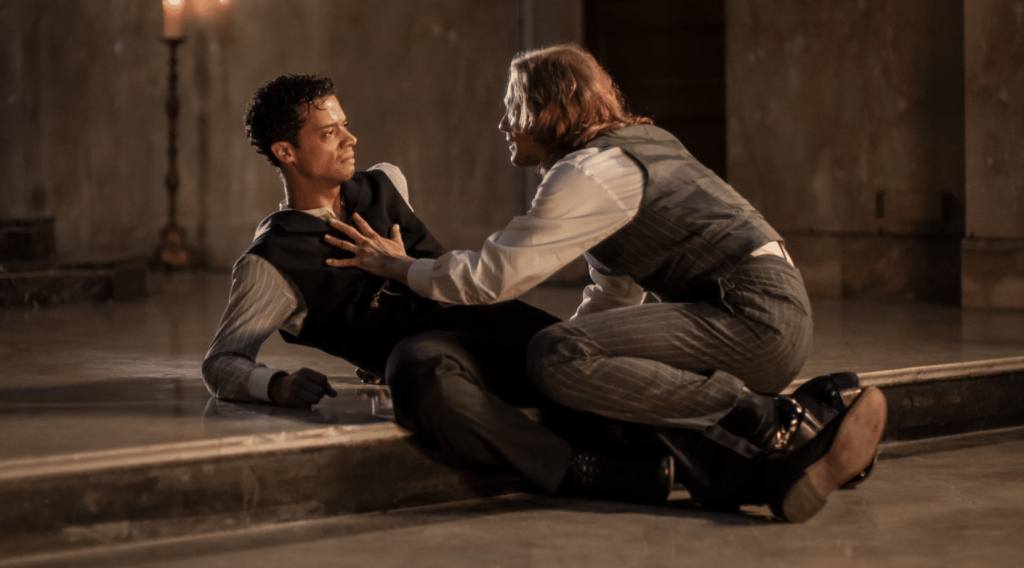
Nevertheless, we push on with the interview, at Louis’ insistence that everything he says is as accurate as he remembers it.
Who owns this narrative?
In episode three, another player enters the fray: young Claudia, who happens to love journaling every moment of her life in great detail. In the books, Claudia was merely five years old when she was turned into a vampire, but in the show they have aged her up to a prepubescent.
Claudia, who is also Black, is saved from a racially-motivated fire by Louis, and taken back to Lestat who must turn her into a vampire before she dies. He agrees (eventually), and thus the three of them become a bizarre little found family. From here, Claudia becomes the primary narrator, via the words in her diaries that Louis has preserved in his library.
Her take on the world of vampires as a perma-teen is naturally very different from Louis’, and her diaries are filled with accounts of murder and bloodlust as much as they are with crushes on boys and petty arguments with her ‘Uncle Les’ and ‘Uncle Lou’.
‘It’s like Anne Frank meets Stephen King,’ quips Molloy. ‘And she makes the pair of you look like a couple of whiny, existential queens.’
Read: Decision to Leave review: Park Chan-wook’s hypnotic neo-noir
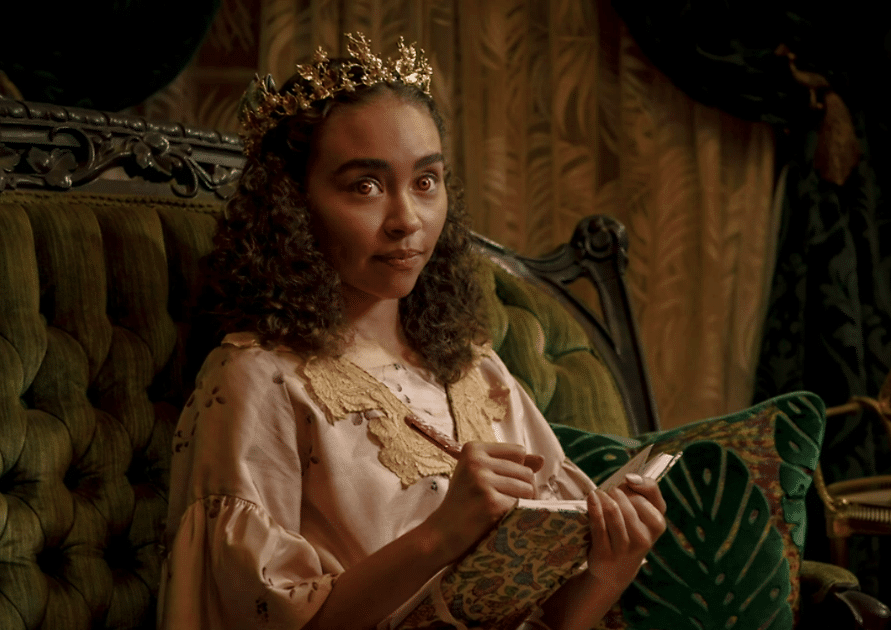
However, Molloy soon discovers that a number of Claudia’s diaries have pages torn out. ‘For her protection,’ Louis explains, but Molloy disagrees. He calls it ‘editorialising,’ and finds it irresponsible, no matter how distressing her personal accounts may be.
A pattern has emerged: none of these narrators are in control of their own stories. Louis has hang-ups about his former lover, Claudia is edited by her pseudo-parent, and even Daniel Molloy himself has a fading memory – in part due to his age and his past penchant for drug use, but also the creeping Parksinson’s disease that is taking over his body.
When we see Molloy’s memories from his first meeting with Louis in the 70s, we begin to realise how much the journalist has omitted from his own account. I can’t give examples here without spoiling the series, but it furthers the idea that no-one is being totally truthful.
But still, the series has centered Louis de Pointe du Lac as its hero, and Daniel Molloy as the conduit to his story, who doesn’t let the big questions go unanswered – and so we want nothing more than to believe them.
And then, at the eleventh hour of season one, yet another character is revealed, this one more powerful and controlling than any of the previously introduced players. Their mere presence calls into question everything that has been recounted so far, and leaves the viewer chomping at the bit for season two (which, thankfully, is coming). I can’t say anything more than that without spoiling a fair bit. Whew!
So what is the truth?
The feeling of being ‘seduced’ by the story, and then thrown about by the twists, the unreliable narration, and the redacted events makes for a delightfully dizzying viewing experience. There’s really no better word for this series than ‘intoxicating’.
As a journalist myself, it’s fascinating to see what happens when a distinguished reporter is asked to record a story that is almost completely unverifiable, yet so compelling that he can’t walk away. I get it 100%. I also want him to get out of there while he still has all of his blood inside of his body.
Season one of Interview with the Vampire leaves us with more questions than answers, and I’ve never been happier to be confused. Why let journalistic integrity get in the way of a good story? I’m sure there’s no way that could backfire …
You can now watch all of Interview with the Vampire season one on AMC+ (with a Prime subscription).
